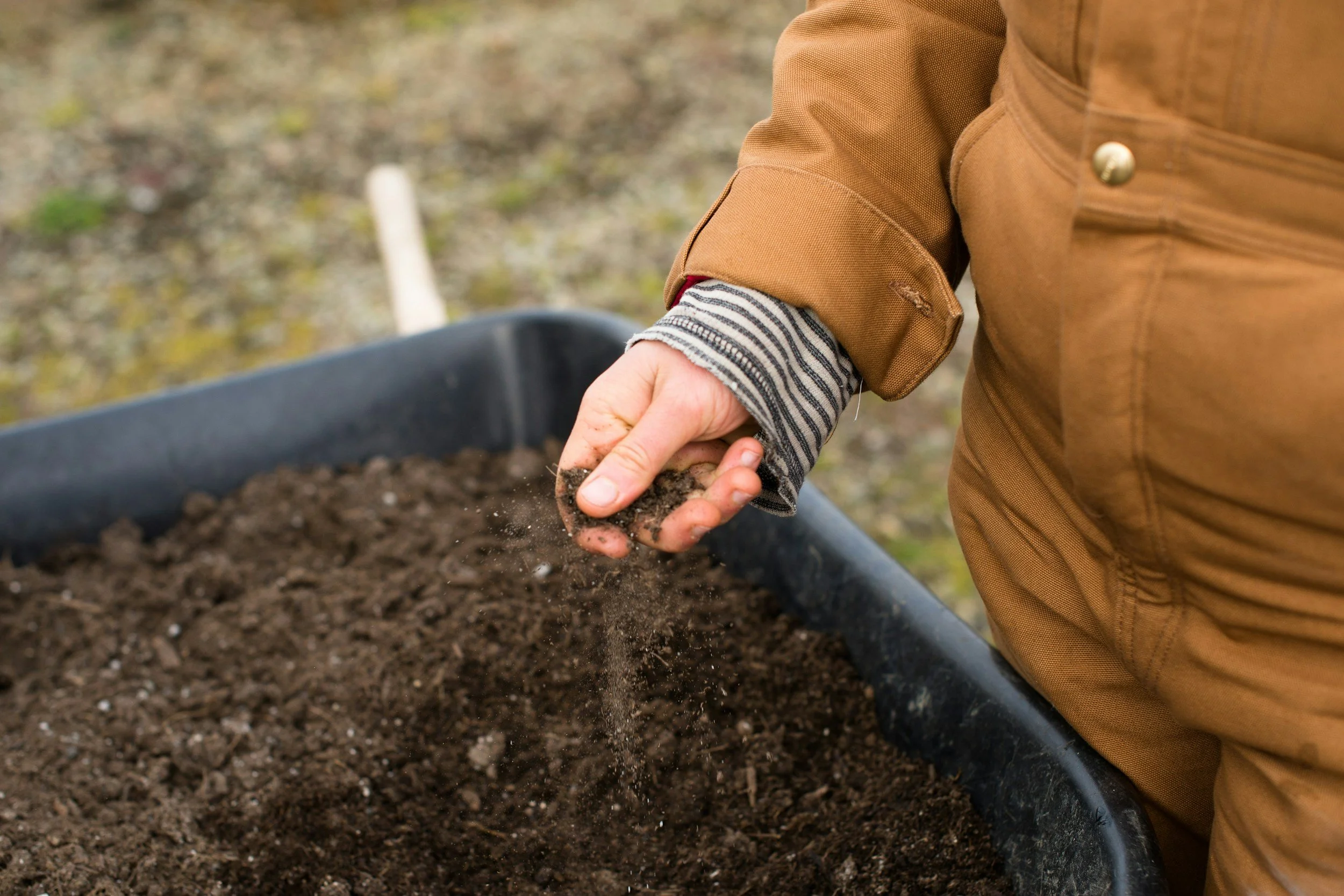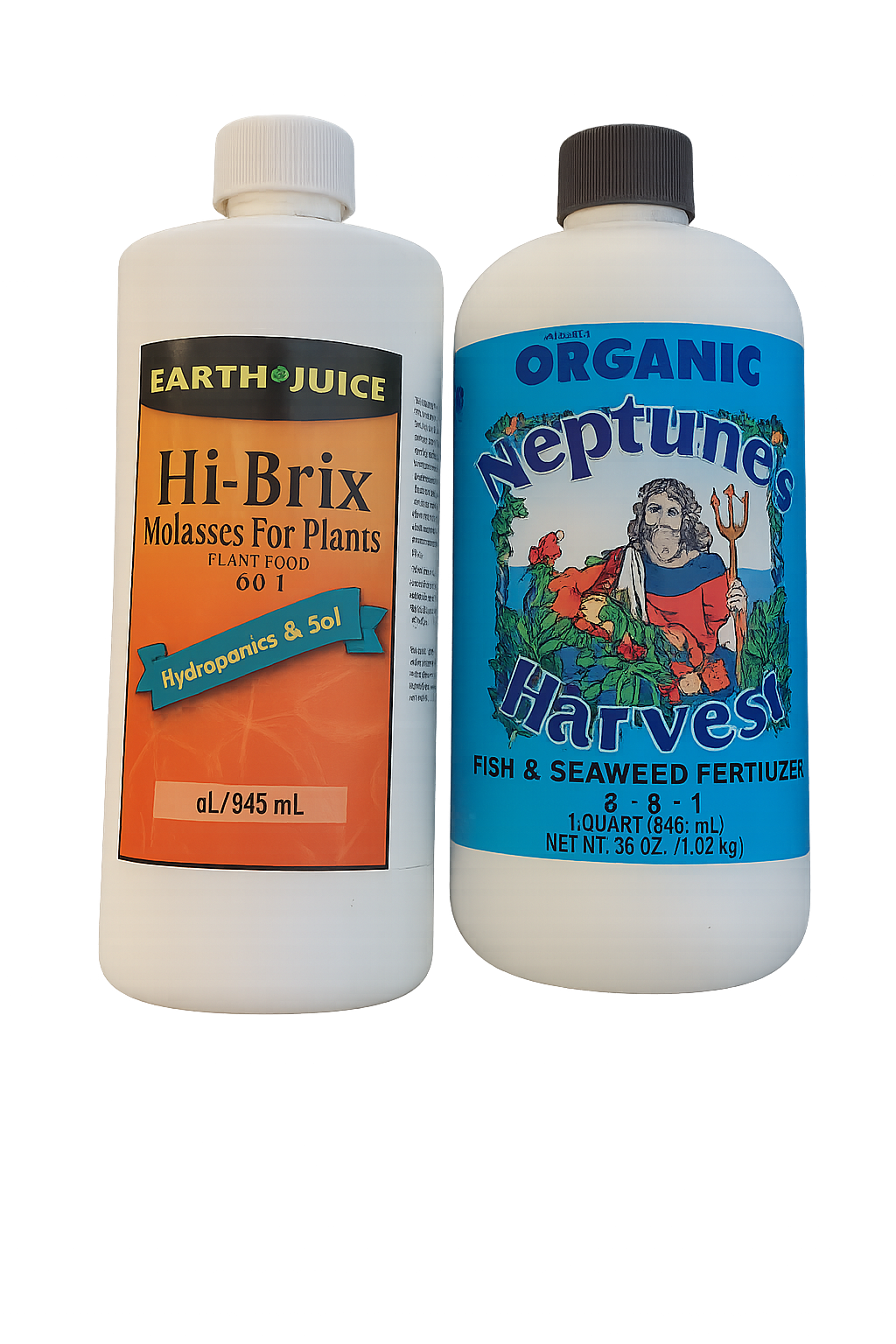From the Ground Up: Why Healthy Soil is the Secret to Thriving Flowers 🌱
If there’s one thing I’ve learned as a flower farmer, it’s this: the health of your flowers starts beneath your feet.
Soil is the very soul of the farm—it’s where the magic begins. And after years of growing, failing, experimenting, and digging deep (literally and emotionally), I’ve come to believe this truth:
🌿 Healthy soil grows healthy flowers. Healthy soil grows healthy people.
The Healing Power of Soil
Let’s start with something that’s often overlooked in all the science talk: being in soil actually heals us.
Soil microbes trigger serotonin production when we garden or work with our hands in the dirt—boosting mood and reducing anxiety. It’s sometimes called “nature’s Prozac.”
These same microbes support gut health by introducing diverse bacteria into our system—especially for those of us who live or eat from the land.
It’s also good for our immune systems, stress response, and even sleep. Simply put: when we care for the soil, it has a way of caring for us right back.
I’m Still Learning
The more I grow, the more I realize how much I still don’t know. I’m not an expert—just someone who is sharing what I’ve learned in hopes it helps or inspires someone else. Whether it’s a small backyard bed or a full flower field, we’re all learning together. I’m constantly adjusting, pivoting, and learning—right alongside my plants.
🧪 Start with a Soil Test
You can’t manage what you don’t measure—and that’s why a soil test is essential.
We’ve used our local Michigan State University Agricultural Extension testing lab:
👉 MSU Soil Test Link
If you're outside of Michigan, check with your local university extension program. Or, you can order an at-home soil test kit online (I'll link a few favorites below with my affiliate links!).
Why test?
A good soil test tells you pH, organic matter levels, and nutrient availability (especially nitrogen, phosphorus, potassium, and micronutrients). Without this info, you could be overfeeding or underfeeding—wasting money, hurting your plants, or even harming the environment.
🛒 [Here is a link to an at home soil test you can order online]
🌱 What Flowers Pull from the Soil
Cut flowers are beautiful—but they’re also nutrient-hungry. When we harvest the flowers, we’re also removing nutrients from the soil that must be replenished.
Over time, this depletes your soil—especially of key macronutrients like nitrogen (N), phosphorus (P), and potassium (K).
To replenish what your flowers take, you need a fertilizing strategy that starts with building soil health.
More than Dirt: How We Build Living Soil to Grow Better Blooms
We’ve spent the past five years investing in our soil: compost, cover cropping, broadforking practices, and lots of organic matter. And let me tell you—it shows. Earthworms, deep color, crumbly texture... it's alive.
We believe in feeding the soil so the soil can feed the flowers.
1. Building the Foundation: Compost, Amendments & Microbial Support
Every fall and spring, we build our beds with compost and aged manure. These slow-release, microbe-rich amendments are the backbone of soil health. They build structure, improve water retention, and support the web of life underground.
Our favorite blends: Dairydoo and worm castings. You can also input mushroom compost or aged chicken or cow manure (fully broken down).
Alfalfa Pellets During Soil Prep
Alfalfa pellets are one of my favorite “secret weapons” when it comes to enriching the garden. I grab big bags of pelleted alfalfa from the farm store—sold as horse feed—for a fraction of the cost of typical alfalfa meal, and use them throughout our beds.
When prepping garden beds in the spring, I sprinkle a layer of alfalfa pellets into our annual beds and tuck a handful into planting holes for perennials, roses, dahlias and fruit trees.
Alfalfa adds organic matter that encourages earthworm activity and feeds soil microbes. It also brings nutrients from deep within the soil thanks to its long taproots. As it breaks down, the garden receives a slow and steady release of natural nitrogen and minerals—a gentle nudge for strong, healthy growth.
Planting with Mycorrhizal Fungi Inoculant
Almost every plant, mainly perennials, gets its root ball dipped in mycorrhizal fungi inoculant before planting. These fungi form a symbiotic relationship with plant roots, dramatically increasing their ability to access water and nutrients. In return, plants feed the fungi carbon. This invisible partnership helps your flowers thrive without extra inputs.
This is what leads us into fertilizing—with intention, not guesswork.
Bone Meal for Dahlias
When planting our dahlias, we add a scoop of bone meal (with a generous handful of alfalfa pellets) directly into the planting hole. These natural amendments provide phosphorus and calcium, which support strong root development and sturdy stems.
2. Compost Tea & Worm Casting Tea (The Gentle Boost)
During active growth and early bloom phases, we drench or foliar spray with homemade compost teas. These help deliver nutrients in a bioavailable form and support beneficial soil microbes.
Our favorite time to use it: Once a week during peak growth. We spray early morning or evening to avoid sunburn.
You can buy pre-bagged compost tea such as Morgan Compostings Compost Tea (our favorite during the busy season) or make your own:
🐛 Worm Casting Compost Tea Recipe for Flowers
🌿 Ingredients:
2 cups worm castings (we love WormDoo by Dairy Doo or we’ve use this one for years as well)
4–5 gallons non-chlorinated water
(Optional) 1 tablespoon unsulfured molasses
(Optional) 1 tablespoon kelp powder or liquid kelp
🪴 Equipment:
5-gallon bucket
Mesh bag, old sock, or cheesecloth
Long spoon or stick for stirring
(Optional) Aquarium pump with air stone
🍵 Brewing:
Option 1: Simple Soak (Non-Aerated)
Place castings in mesh bag and submerge in water
Stir well, steep 24–48 hours, stirring occasionally
Strain well if spraying on leaves
Use immediately
Option 2: Aerated Tea (More Potent)
Same as above, but add aquarium pump
Brew no longer than 24 hours
Use promptly for peak microbial life
⚠️ Important Note: Do not use compost tea that has been brewed for longer than 48 hours (or 24 hours if aerated). Over-brewing can cause anaerobic conditions, where harmful bacteria outcompete the beneficial ones. Applying this to your plants can do more harm than good—leading to root stress, foliar burn, or disease. Always use compost tea fresh!
🐟 3. Fish Emulsion & Seaweed Extract (The Ocean Tonic)
These natural fertilizers are rich in trace minerals and encourage leafy growth, root development, and resilience.
Fish emulsion = nitrogen-rich (great for leafy green growth early on).
Seaweed extract = full of cytokinins and minerals that help with stress tolerance, root development, and bloom support.
I use this mix of both: Fish & Kelp Fertilizer (yes it stinks, but the garden LOVES it).
We often mix them and apply every 10–14 days when plants are in active growth. Ideally, I’d love to get back to a weekly fertilizing rhythm, but lately we’ve been landing in that 10–14 day window—and that’s working for now.
Additional tip: I set calendar reminders for fertilizing days to keep me on track 📅
4. Raising BRIX Levels (The Healthier Plant Secret)
One of my newer learnings is about Brix levels—a measure of the sugar content in plant sap. Higher Brix = healthier plants, stronger stems, better resistance to pests, and more vibrant blooms. Higher sugar level = less munching insects.
Brix is commonly measured using a tool called a refractometer. While mostly known in the wine and fruit industries, flower farmers are beginning to look at Brix as an indicator of overall plant vitality. Higher Brix not only improves floral color and resilience, but also makes your plants less attractive to pests, as many insects are drawn to low-sugar, stressed-out plants.
I used to use this Earth Juice Hi-Brix, but it was sold out the last time I tried to reorder it, so I switched to this molasses, which I will use before purchasing the Earth Juice again.
How do we raise it?
Feed the soil, not just the plant
Use foliar sprays in early morning (when stomata are open)
Support microbial activity with compost, mycorrhizal fungi, and humic acids
Reduce stress by keeping plants evenly watered and well-fed, without overdoing it
Goal: The higher the Brix, the less appealing your plants are to pests. Think of it as boosting the plant’s immune system from the inside out.
I’m still learning and experimenting with this—but it’s become a fascinating piece of the puzzle for me. Definitely worth digging into if you're a fellow soil health nerd!
Also, I have to say—switching to a backpack sprayer has been a total game-changer. I used a hose-end sprayer (like the Ortho Dial) for a couple of years, and while it worked, it started clogging over time. The backpack sprayer has made fertilizing so much easier and more efficient. One day I’d love to upgrade to a battery-powered version, but even this manual one has been a huge improvement.
5. Organic Bloom Fertilizers (The Flower-Pushers)
As soon as plants start budding, we switch to a bloom formula that’s lower in nitrogen and higher in phosphorus and potassium. These nutrients support flower production, stem strength, and overall plant health.
We like:
We apply every 2–4 weeks depending on crop type and rainfall.
6. Slow-Release Options (For Set-It-and-Forget-It Beds)
For beds we can’t easily re-fertilize—like our tunnel crops or long-term perennials—we use organic slow-release fertilizers (like Sustane or Osmocote). It’s a good insurance policy during busy stretches when the watering can feels miles away.
Final Thoughts
Healthy soil isn’t a one-time achievement—it’s a relationship. It requires listening, learning, and giving back more than we take. The more I farm, the more I realize how much I still have to learn.
But by sharing my journey, I hope it encourages you to start your own—whether it’s a backyard bed or a full flower field.
Because flowers really are a kind of soul medicine. And if I can grow them, I promise—you can too.
With love and floral magic,
Alex
Owner & Founder - Bede’s Blooms + Co.
🌸 Let’s stay connected!
Follow along behind the scenes on Instagram (@bedesblooms.co) , join our Blooms Club newsletter, and be the first to know about upcoming events, exclusive giveaways, and seasonal flower launches.
👉 Click here to sign up and never miss a bloom!
My mini bestie <3






